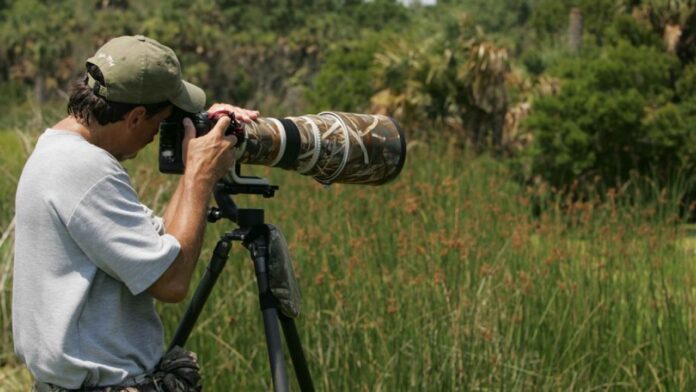Wildlife photography can be challenging, and choosing a camera with high ISO capabilities and frames per second is essential (FPS). This is because you will probably be shooting in low-light conditions, and you will need to be able to raise the ISO without introducing noise into your shots.
Choosing a lens
There are many factors to consider when choosing a lens for wildlife photography. First, it is essential to identify the subjects and locations you want to photograph. This will allow you to choose a lens accordingly. For example, if you’re interested in photographing birds, you’ll want to choose a telephoto lens. For insects, you may want micro-lens.
Another essential factor to consider is focal length. In general, lenses with a focal length of 300mm or longer are recommended for good wildlife photography. While shorter focal lengths can be more convenient, you’ll have trouble getting a good shot if you can’t zoom out to get close to the subject. Longer focal lengths also increase the camera’s weight and make them more expensive. However, you can compensate for this by purchasing a lens with a high megapixel count.
Getting started
One of the best ways to get started with wildlife photography is to buy a camera and a lens. The most common lens for wildlife photography is a telephoto lens, which is suitable for taking pictures at distances. Some are also equipped with optical stabilization to reduce shaking caused by the extreme magnification. While these lenses can be expensive, they are a great place to start if you are a beginner. You can also start with cheap plastic lenses and use a tripod. A high shutter speed will help minimize blur, too.
Before you start shooting wildlife, learn about the animals you will capture. Some animals hide well, so it’s essential to learn as much as you can about their behavior and location. Knowing when and where to see specific species will help you make better, more unique photographs.
Working the shutter independently from the focus
Try working the shutter independently from the focus to ensure your wildlife photography is as smooth as possible. Decoupling the focus button from the shutter ensures that your subject is focused even after the shutter has been released. This technique will help you avoid missing an important detail and can be especially beneficial when shooting wildlife.
To take an exceptional wildlife photograph, you must adjust your camera’s settings to suit the subject you’re trying to photograph. First, you need to set the focus on the subject you’re trying to photograph. This feature will come in handy if you have to focus on a moving subject.
Choosing a background
The background for your wildlife photograph should complement your subject, not detract from it. A background that strongly contrasts the subject will throw off the whole aesthetic effect. For example, if your subject is a lion, you might not want to shoot the animal against the greenery of a forest. Instead, you could try capturing the infant sitting against a brown tree trunk.
When choosing a background for wildlife photography, you should consider the background’s color and lighting. It is best to shoot against a dark background to highlight the detail of your subject. A light background is ideal for brighter subjects, but it is not recommended for photographs of white animals.
Shooting in low light
The key to shooting wildlife photography in low light is knowing how to set the ISO in your camera. The higher the ISO, the better the photo quality, but you’ll have to trade off some quality in digital noise and grain. In some cases, this may be your only option. For other times, you might need to lower the ISO or adjust the shutter speed.
Another factor to consider when shooting wildlife photography in low light is shutter speed. A fast shutter speed will freeze the motion of your subject, whereas a slow shutter speed will cause a camera shake.
Preparing for the decisive moment
Preparing for the decisive moment is crucial in wildlife photography. Preparation involves scouting the subject, choosing the proper background, and knowing when to strike the decisive moment. It is also vital to act quickly and react when a moment arises.
The decisive moment is not the moment you press the shutter, but the moment you compose the photograph. You must observe the action and wait for it to unfold before taking your shot. To do this, you must be able to predict the behavior of both the wildlife and the people in the scene.









![Anso FG Reviews: UPDATED 2024 [ansofg.com] Anso FG Reviews UPDATED 2024 [ansofg.com]](/wp-content/uploads/2023/12/Anso-FG-Reviews-UPDATED-2024-ansofg.com_-100x70.png)








